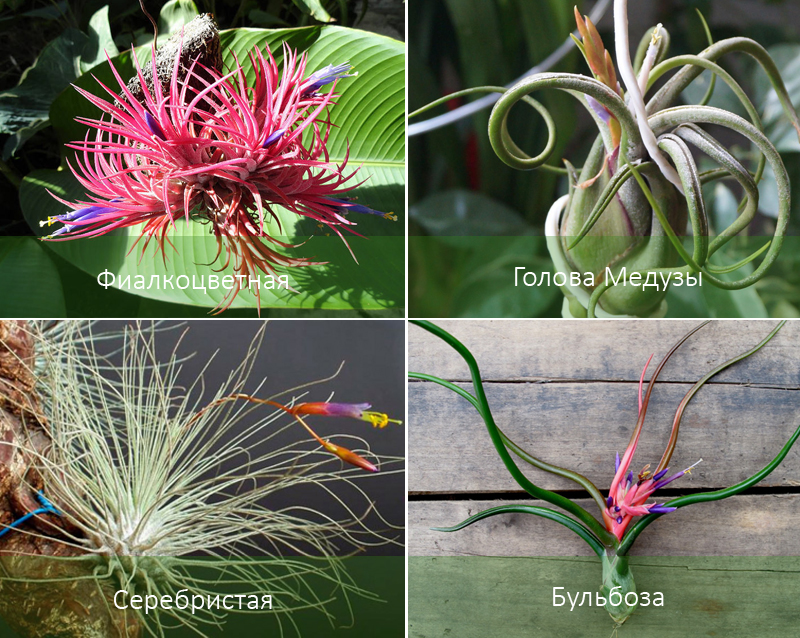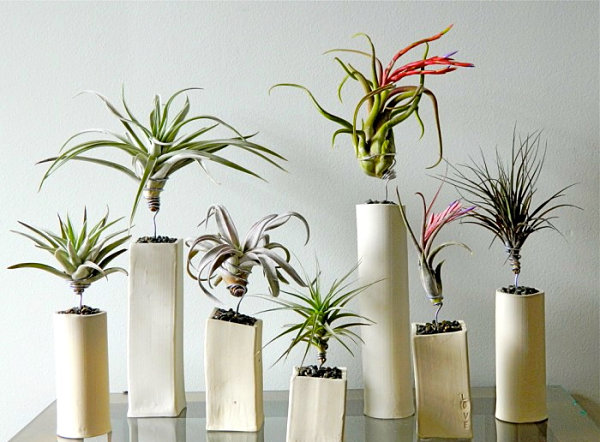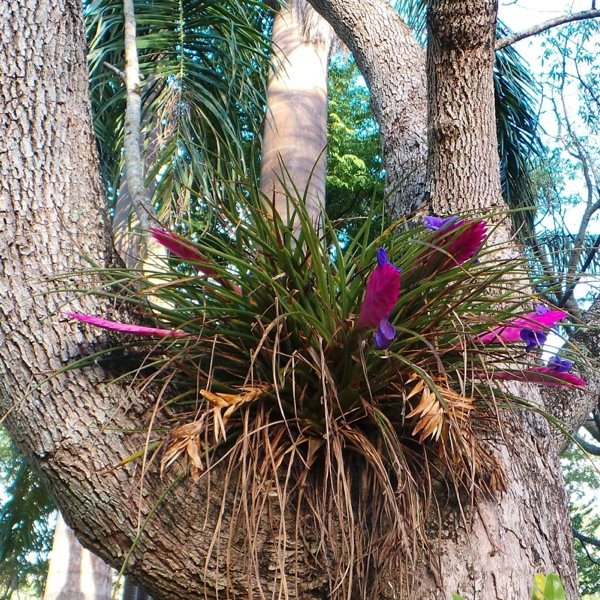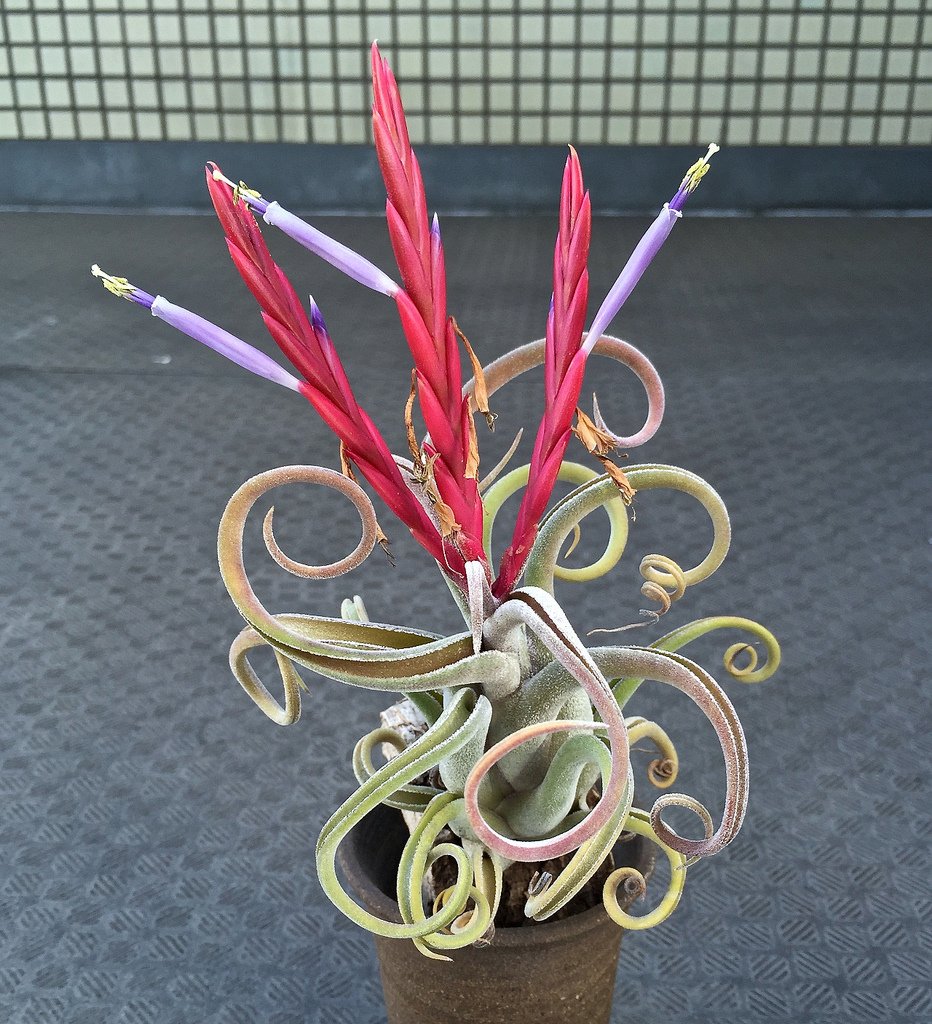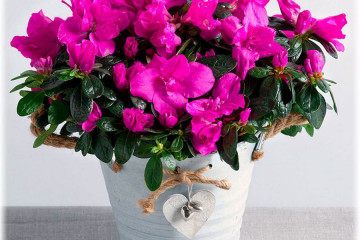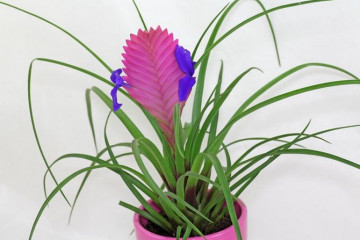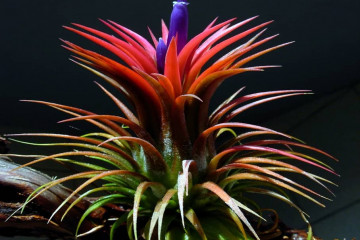Tillandsia - home care after purchase, flowering and transplanting
Content:
Tillandsia is an unusual and exotic plant. He is loved and appreciated for its decorativeness, and the types of tillandsia are completely different from each other. Unusual in shape, color, flowering and growth mode, these amazing flowers have conquered many florists and decorators. The most interesting thing is that these exotic epiphytes are the closest relatives of pineapple.
The origin and appearance of the plant
The native home of this exotic plant is the tropics and subtropics of South and Central America. Tillandsia belongs to the genus Bromeliads and has more than 500 varieties. The most common are atmospheric and potted:
- Atmospheric species do not have a developed root system, and root shoots are used only to attach themselves to a tree trunk, stone or snag. They feed from the air, getting the moisture and nutrients they need. The leaves are similar to succulents - fleshy with a supply of moisture inside. They grow in the form of a rosette or chaotically twisted long shoots, taking on uncomplicated forms. The peculiarity of atmospheric tillandsias is that the plant blooms once in a lifetime.
- Potted plants are more like regular houseplants. They grow in loose airy soil, preferring the upper deciduous layer in the wild. The root is poorly developed, the plant receives the bulk of its nutrition from the air. The leaves are green, glossy, juicy.
Plant flower descriptions
Tillandsia flowers look like fantastic drawings by the artist. Such unusual tropical bright colors are collected in no less strange inflorescences. Atmospheric bloom with colorful fountains. Their flowers are composed of petals that look almost like leaves, but have bright colors and color transitions on one petal. The stamens are long, clearly visible in a different color.
Potted tillandsia has a developed bracts, which have the shape of a single-row or multi-row spike. Flowers appear alternately from its dense sinuses. Ears of bright light shades, flowers are just as bright, but darker.
Types and varieties
The most popular among Russian florists:
- Tillandsia Anita. This species is hybrid, it is loved and bred for its colorful flowering. Home care for Anita Tillandsia comes down to providing warmth, which all bromeliads love, and high humidity. Nutritious and light soil should be constantly moist, air humidity not lower than 60% for comfortable growth. The lighting is not bright, diffused light. You can fertilize by spraying, since these plants feed through the leaves, not the roots.
- Tillandsia usneiform is an aerophyte that does not have a root system. It feeds exclusively from the air, which must be sufficiently moist and fresh. In summer, the temperature should not be higher than 22 ° С, in winter, not lower than 15 ° С. To maintain optimal humidity, it requires spraying up to five times a day, but it will reward it with the rapid growth and decorativeness of its falling silver lashes. Propagated by shoots.
- Tillandsia atmospheric in care is unpretentious, if you create the appropriate conditions. Leaves are fleshy, gray due to small scales.It perfectly tolerates partial shade, but it needs a constant flow of fresh air, as well as 70% humidity. The temperature regime is needed 22 ° C and 15 ° C in summer and winter, respectively. Loves temperature changes at different times of the day, similar to the natural change of day and night. You can take it outside in summer, hanging it on trees, shrubs, verandas.
- Tillandsia blue. In the wild, it grows on the bark of trees, but at home it can huddle in a pot, but in an airy substrate. Loves light, but not direct sunlight. With a lack of light, it loses the rich color of leaves and inflorescences. Watering is not needed often, it requires more moisture through spraying, but without stagnation of moisture at the base of the leaves. After flowering, the blue beauty begins to grow overgrown with children, slowly dying off, therefore, does not require a transplant.
- Tillandsia xerographica has succulent, rigid leaves, possessing a decorative silvery rosette. It can grow up to 50 cm in height. Has the ability to accumulate moisture in its curled leaves. It requires frequent watering and moisture in the fresh air, since it does not have a root system.
- Tillandsia Head of Medusa. Quite common bromeliad due to its unpretentiousness and decorative effect. It resembles a bulb of densely collected leaves, which only deviate at the top and begin to curl in a spiral. It has no roots, it feeds on the type of all atmospheric species.
- Tillandsia Cotton Candy - aerofit, easy to clean. It adjusts to the temperature of Russian apartments, in winter it can tolerate a decrease to 12 ° C. Watering is not needed often, spraying every other day. Demanding only on the light: there should be a lot of it, it grows even in direct sunlight.
- Tillandsia Samantha is a bright evergreen representative of the species. Saturated glossy leaves and voluminous colorful blooms allow her to be demanding in care. It can grow in a pot or pots, but the root is developed only as a fastener. Frequent watering and spraying without moisture accumulation in the foliage is all she needs for nutrition. Good lighting and fresh air will create all the conditions for Samantha to bloom.
- Tillandsia Ionanta, or violet-flowered, is an unusual species with beautiful flowers. It often grows in florariums, as it is a small bush. Likes to swim once every half a month under the shower or in full immersion baths. Requires abundant light, but not bright rays.
- Bulbose has stems, which means it tends to store moisture in its thick stems that look like bulbs. Atmospheric exotic is very easy to care for, requires abundant watering, humidity and diffused light. The temperature is moderate, winters without whims. Blooms continuously in the summer months.
Planting and transplanting
A plant that has just been brought from the store is best transplanted. If the acquired plant has released an arrow of a peduncle, the transplant can help to dry the flower. After 3-4 years, in the absence of flowering, potted species can also be transplanted. In the wild, this handsome man grows on the top layer of the earth or on the bark of trees; the mind does not need soil as such.
For planting and transplanting a plant, pieces of bark are needed with the addition of moss, peat, sand, akadama, river pebbles, coconut fiber. The pot should be taken wide and low, the smallest size relative to the plant. Clay and ceramic pots will keep the root system from choking in the soil.
How to transplant:
- The soil and the pot must be sterilized in the oven or with steam.
- Taking the plant out of the pot, carefully examine its roots. If dry or decayed areas are present, remove and treat with charcoal.
- Dried or old bottom sheets are removed during transplanting.
- Charcoal should be used as a drainage layer.
- Pour the soil mixture on top, then plant the plant steadily and cover with the rest of the soil.
- If the top roots are sticking out of the pot, you can cut them off.
Atmospheric species do not need soil, they feel great when suspended. They are hung on a wire, soft tape or rope. Also, the flower can cling to pieces of bark, stones covered with moss, or shells with its roots.
Reproduction
It is easy to propagate tillandsia - it is enough to wait for the children after the flowering of an adult plant, or to plant seeds.
Reproduction by shoots
One plant can give from 3 to 8 babies, which over time grow and fill the entire area, the mother plant dies. They need to be cut from the outlet when they are half the size of an adult plant and have roots.
Growing from seeds
Only potted species reproduce by seeds. At home, there is no way to get seeds, they are purchased. You need to plant on a mixture of peat and sand, without immersing the seed in the soil. Moisten the soil by spraying, be sure to tighten the pot with foil and put it in a warm place at least 25 ° C. Tillandsia grows long and reluctantly.
Tillandsia: home care
The flower requires the following care:
- watering is frequent and abundant for aerial plants without roots. They like to shower or completely immerse themselves in water for a while twice a month. Spraying and maintaining high humidity levels creates ideal conditions for growth and flowering. The water should be purified, soft and slightly acidic;
- you need to feed with special fertilizers for Bromeliads once every two months. Top dressing should be free of copper and boron;
- if the flower has lost its brightness, it is enough to provide it with good lighting, and it will begin to turn green again;
- care during the rest period should be more careful, since the temperature decreases and does not allow excess water in the outlet to evaporate. It is important to ensure that moisture does not stagnate, creating an environment for the development of rot and fungus.
This unusual exotic does not require so much in comparison with the full return of the beauty and decorativeness of its appearance and exotic flowering. The main thing is to follow the rules described above.



